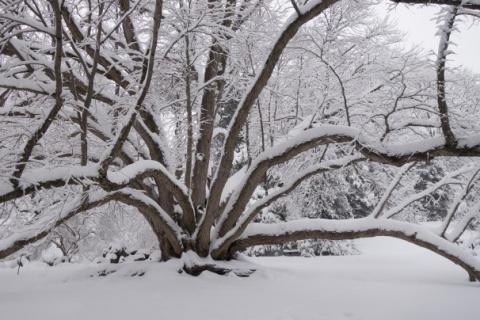
By Adrian Higgins
The Morris Arboretum is a zoological park not for animals but for more static creatures: shade trees, conifers and shrubs. Some of the most interesting and precious species of temperate woody plants on the planet have come together here to shape its rolling 166 acres on the northwestern edge of Philadelphia. It is hard to imagine a more bucolic city neighborhood.
By a sylvan stream, its lanky executive director, Paul Meyer, points out a pair of bald cypress trees that stretch 50 feet into the winter sky. He collected them as cones in 1976, on a visit to a state park near the Delaware shore that is the northernmost range of this native swamp conifer. They mark the span of one man’s life, so far, in the company of trees.
But it is to another specimen that he wants to direct my attention: a tree sacred to Japanese lore, the katsura. With age, its limbs grow into muscular, wrinkled boughs that extend sideways.
The Morris katsura sits on a knoll, unfurling its branches like a stop-motion sea monster from an old B-movie. The tree is about 120 years old and dates to the institution’s origins as the private estate of brother and sister John and Lydia Morris, prominent Quaker philanthropists in the well-heeled neighborhood of Chestnut Hill.
They left it in 1932 to the University of Pennsylvania, and in the ensuing decades it has become everything you want an arboretum to be: a place of biodiversity, scientific research and beauty. More than 130,000 visitors pass through its gates each year, but only the hardy souls are found on its trails on a freezing winter’s day.
We are in the bone-chilling back end of winter, when trees are dead or deadlike, right? Wrong. Someone once calculated that a mature elm tree might have 7 million buds at this time of year, waiting patiently for spring. And consider those buds, each encasing a flower or a leaf that is embryonic but already formed, like a butterfly in a chrysalis preparing to break free and spread its wings. The buds formed over the summer at the base of every leaf stalk. They were there when the leaves dropped, but even then we didn’t see them.

